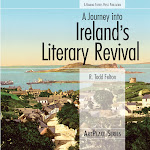.jpg)
Photographing The Old Manse in Concord, Massachusetts
As I began working on A Journey into the Transcendentalists’ New England, I read Ralph Waldo Emerson’s book, Nature. He wrote it while living at the Old Manse, and the book serves as one of the foundations of Transcendentalism. Here is a key passage from the beginning of Nature:
In the woods, we return to reason and faith. There I feel that nothing can befall me in life, -- no disgrace, no calamity, (leaving me my eyes,) which nature cannot repair. Standing on the bare ground, -- my head bathed by the blithe air, and uplifted into infinite space, -- a mean egotism vanishes. I become a transparent eye-ball; I am nothing; I see all; the currents of the Universal Being circulate through me; I am part or particle of God.
For me, this became a central tenet to my photography. Try to become Emerson’s “transparent eye-ball” and see “all.” This was particularly difficult on Boston’s Common during rush hour, but not so much at the Old Manse.
In Nature, Emerson writes of the importance of escaping not just from the society but also from one’s “chamber.” To that end, I wanted to capture a sense of the chamber in which Emerson wrote. Unfortunately, at the Manse (as at many literary landmarks), you need special permission requiring an application and a fee to shoot photographs for publication from the inside, so I set up this shot of the outside.
At the Old manse in Concord, the noises of the outside world fade away to be replaced with the sounds of place: the rustling of leaves, voices drifting across the yard, the occasional splash from the river, and, if you listen very carefully, echoes from the past. Of all the historical sites I’ve visited and photographed, the Old Manse is one where the past always feels close, so it was not at all surprising to find this colonial soldier guarding the bridge (actually, just a costumed volunteer).
.jpg)











0 comments:
Post a Comment